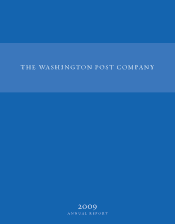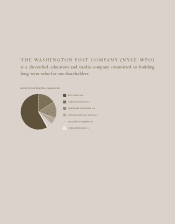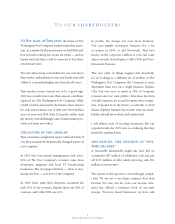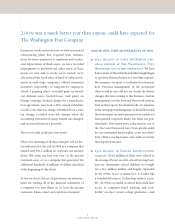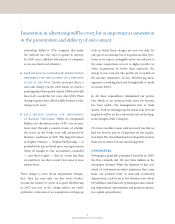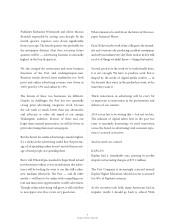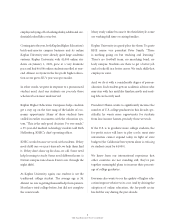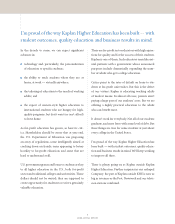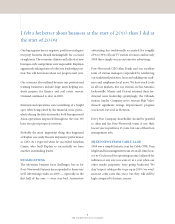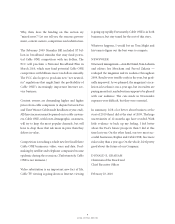Washington Post 2009 Annual Report Download - page 11
Download and view the complete annual report
Please find page 11 of the 2009 Washington Post annual report below. You can navigate through the pages in the report by either clicking on the pages listed below, or by using the keyword search tool below to find specific information within the annual report.
9
2009 ANNUAL REPORT
is going up rapidly. Fortunately, Cable ONE is in both
businesses, but stay tuned for the rest of this story.
Whatever happens, I would bet on Tom Might and
his team to figure out the best ways to compete.
NEWSWEEK
Newsweek management—Ann McDaniel, Tom Ascheim
and editors Jon Meacham and Fareed Zakaria —
reshaped the magazine and its audience throughout
2009. Results were terrible early in the year, but grad-
ually improved. As we planned, the magazine’s circu-
lation is less than it was a year ago, but its readers are
paying more for it, and advertisers appear to be pleased
with our audience. The cuts made in Newsweek’s
expenses were difficult, but they were essential.
In summary, I felt a lot better about business at the
start of 2010 than I did at the start of 2009. The huge
uncertainties of 12 months ago have receded. With
little evidence to back up my feeling, I feel better
about the Post’s future prospects than I did at this
time last year. On the other hand, our two most suc-
cessful businesses, Kaplan and Cable ONE, face more
risks today than a year ago. On the whole, I feel pretty
good about the future of our Company.
DONALD E. GRAHAM
Chairman of the Board and
Chief Executive Officer
February 23, 2010
Why, then, does the heading on this section say
“mixed news”? Let me tell you the reasons: govern-
ment, content owners, competitors and substitution.
The February 2009 Stimulus Bill included $7 bil-
lion in broadband stimulus that may fund poten-
tial Cable ONE competitors with tax dollars. The
FCC will proclaim a National Broadband Plan in
March 2010, which may fund potential Cable ONE
competitors with billions more tax dollars annually.
The FCC also hopes to proclaim new “net neutral-
ity” regulations that might limit the profitability of
Cable ONE’s increasingly important Internet ser-
vice business.
Content owners are demanding higher and higher
prices from cable companies (a dispute between Fox
and Time Warner Cable made headlines at year-end).
All these increases must be passed on to cable custom-
ers. Cable ONE, with lower-demographic customers,
will try to keep the most popular channels, but will
have to drop those that ask more in price than they
deliver in value.
Competition is reaching a whole new level in all three
Cable ONE businesses: video, voice and data. Deal-
making by satellite and telephone companies became
epidemic during the recession. (Unfortunately, Cable
ONE is not immune.)
Video substitution is an important new fact of life.
Cable TV viewing is going down as Internet viewing

